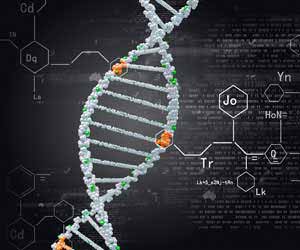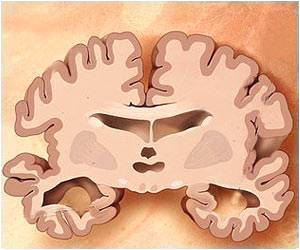The brain may harbor genetic diversity stemming from somatic mutations, which might drive neuropsychiatric diseases whose causes remain unknown.

‘2016 Grand Prize Winner, Dr Gilad Evrony, honored for the pioneering novel approach to single brain cell genome sequencing.’





The approach provided a first-ever detailed look at somatic mutations in the brain, and an important revelation - many types of mutations occur and accumulate during normal brain development, "such that every cell in a person's brain, in fact, has a unique genome," said Evrony, who obtained his M.D. and Ph.D. from Harvard Medical School during his time in the laboratory of Dr. Walsh. "Sequencing brain cells one at a time is challenging but necessary, because somatic mutations may be present in only a very small fraction of cells or even just one cell - making them undetectable by standard DNA sequencing." New bioinformatics methods were also needed, which Evrony developed with Eunjung Alice Lee in the laboratory of Dr. Peter Park.The brain is built from progenitor cells that replicate many times, each time making a copy of their genome. "Our brains are a mix of cells with copies of copies, and copies of copies of copies, and so on, of the genome. Imagine you were building a house and every brick was made by copying the previous brick rather than making all the bricks from the same original mold. That is, in a sense, the challenge of building a brain where each cell must have a relatively faithful copy of the genome," Evrony states. "Inevitably, mistakes in DNA replication and other mutational forces accumulate and create imperfect copies."
Further, Evrony and colleagues were able to use the mutations they found as markers to trace how progenitor cells migrate across the brain as it is formed. This revealed interesting patterns showing that every brain is a remarkable patchwork of mosaic mutations. These technologies can now be used to study unexplained neuropsychiatric diseases, such as epilepsy, autism and schizophrenia, to determine whether somatic mutations may be involved. "As a physician-scientist, I wanted to pursue research that could help patients with diseases whose causes are not known. I hope our findings inspire more research to bring light to unsolved neurologic diseases," Evrony said.
The Eppendorf and Science Prize in Neurobiology recognize outstanding international neurobiological research based on current methods and advances in the field of molecular and cell biology by a young, early-career scientist, as described in a 1,000-word essay based on experiments performed within the last three years. The grand prize winner receives $25,000 from Eppendorf.
In his award-winning essay, "One brain, many genomes," which will be published in the 4 November issue of Science, Evrony describes how single-cell sequencing was used to study the first brain-specific somatic mutations causing a rare congenital brain malformation known as hemimegalencephaly. The discovery provided an initial glimpse into the unexplored landscape of somatic mutations and subsequent brain dysfunction, which had been overlooked as most genetic analyses only examine the sequence of blood DNA. Because neurons and their genomes must keep working for an entire person's lifetime, this same technology could also measure how many mutations might creep into our brains as they age.
Advertisement
He believes these findings will ultimately paint a clearer picture of the brain's inner workings, noting, "Our work is part of the broader effort in the neuroscience community to develop new tools to study the brain. The brain is incredibly complex, and I believe that our progress in understanding it largely depends on the development of new technologies." Evrony and the following finalists will be recognized at the annual meeting of the Society for Neuroscience on Sunday, 13 November 2016, in San Diego, California.
Advertisement
Finalists Anna Beyeler, for her essay "Parsing reward from aversion." Beyeler received her undergraduate degree from the University of Bordeaux, in southern France, where she then completed her Ph.D. degree requirements. As a postdoctoral fellow at the Massachusetts Institute of Technology, she has been exploring the neural circuit mechanisms underlying rewarding and aversive memories. Dr. Beyeler is currently establishing an independent research program aimed at identifying neural substrates of anxiety disorders.
Arjun Krishnaswamy, for his essay "Building connections." Krishnaswamy received undergraduate and Ph.D. degrees from McGill University. As a postdoctoral fellow at Harvard University, he has been using molecular, electrophysiological, and genetic approaches to learn how developing neurons in the mouse retina choose synaptic targets and establish wiring patterns important for retinal function.
Source-Medindia















